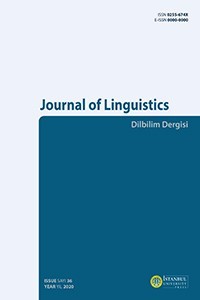Le papillon tête-de-Janus A propos de Sémantique structurale
Over time, Structural Semantics has become a kind of monument, a “classic”
that is often merely welcomed from afar. Is it still necessary to read this text which
takes us back fifty years? Yes, because the potentialities as well as the problems
of the present semiotics are essentially related to the options around which this
founding work is articulated: The adoption of a generative perspective, a lasting
alteration of the problem of meaning on a theory of narrativity, but also an essential place attributed to perception as the basis of the comprehension of meaning.
The subsequent developments and extensions, made either by Greimas, his collaborators or his successors, show a relatively coherent development process in
which the new positions, far from invalidating the original project, have, on the
contrary, made it possible to enrich it.
The “reflections on the actantial models”, the subject of the last chapters of the
book, succeed ten years later in a narrative grammar that presents itself universal
in scope. The strategic choice made in favour of this approach had to result in the
provisional storage of another problem, which was also contemplated from the
outset. For the interrogation of the first pages of Structural Semantics talks about
the “situation of man” attacked “from the prenatal age to death” by meanings
that “appeal to him from everywhere”. In fact, Greimas reminds us ten years later
in his Dictionnaire, “the natural world is a figurative language whose figures are
made of” sensible qualities “[which] act directly - without linguistic mediation -
on man”. Hence the possibility of conceiving a semiotics “of experience”: from
the experience of a meaning, not deciphered from the surface of texts but experienced from our relations with “the things themselves”. Thus, in parallel with the
construction of the “semio-narrative”, Greimas did not cease at any moment to
encourage the work on semiotics directly related to the perception of the sensitive
world (visual semiotics, semiotics of space, semiotics of gesture), and more generally to call for the constitution of a semiotics “of the natural world”. There are
therefore good reasons to read, or to re-read his Structural semantics.
Anahtar Kelimeler:
Structural semantics, A.J. Greimas, semiotics, perception, meaning, actantial models, semio-narrative, visual semiotics, semiotics of space, semiotics of gesture, aesthesia
___
- R. Barthes (1964) Eléments de sémiologie, Paris, Gonthier.
- —— (1967) Système de la mode, Paris, Seuil.
- —— (1973) Le plaisir du texte, Paris, Seuil.
- —— (1977) Fragments d’un discours amoureux, Paris, Seuil.
- D. Bertrand (1985) L’espace et le sens, Paris-Amsterdam, HadèsBenjamins.
- J. Courtés (1981) “ Deux niveaux du discours : le thématique et le figuratif” , Actes Sémiotiques-Documents, 29
- J.-M. Floch (1983) “Figures, iconicité et plasticité” , Actes SémiotiquesBulletin, 26.
- —— (1985) Petites mythologies de l’œil et de l’esprit. Pour une sémiotique plastique, Paris-Amsterdam, Hadès-Benjamins.
- —— (1986) Les formes de l’empreinte, Périgueux, Fanlac.
- —— (1995) Identités visuelles, Paris, Presses Universitaires de France.
- —— (1997) Une lecture de « Tintin au Tibet », Paris, Presses Universitaires de France.
- J. Fontanille et Cl. Zilberberg (1998), Tension et signification, Liège, Mardaga.
- J. Geninasca (1997a), La Parole littéraire, Paris, Presses Universitaires de France.
- —— (1997b), “Et maintenant?” in E. Landowski (éd.), Lire Greimas, Limoges, Pulim.
- —— (éd.) (1981 et 1983) La figurativité, vol. I et 2, Actes Sémiotiques, 20 et 26.
- A.J. Greimas (1956) “L’actualité du saussurisme”, Le français moderne.
- —— (1966), Sémantique structurale, Paris, Larousse, (rééd. Paris, PUF, 2002)
- —— (1968), “Conditions d’une sémiotique du monde natürel”, Langages, 10 (rééd. in Du sens, 1970).
- —— (1976), Maupassant, Paris, Seuil.
- —— (1976 et 1983), Du sens, 2 vol., Paris, Seuil.
- —— (1984), “Sémiotique figurative et sémiotique plastique”, Actes sémiotiques-Documents,VI, 60.
- —— (1987), De l’Imperfection, Périgueux, Fanlac.
- —— et J. Courtés (1979 et 1986), Sémiotique, Dictionnaire raisonné de la théorie du langage, 2 vol., Paris, Hachette.
- E. Landowski (1997), Présences de l’Autre, Paris, Presses Universitaires de France.
- —— (1997), « Le sémioticien et son double », in E. Landowski (1977).
- —— (2004), Passions sans nom, Paris, Presses Universitaires de France.
- —— (2005), Les interactions risquées, Limoges, Pulim.
- —— (2006), « Po dvidesimties metu », Baltos lankos, 21 (introduction à la traduction lithuanienne de A.J. Greimas, « Sémiotique figurative et sémiotique plastique »).
- —— (éd.) (1997), Lire Greimas, Limoges, Pulim.
- F. Rastier (1991), Sémantique et recherches cognitives, Paris, Presses Universitaires de France.
- A. Semprini (éd.), (2003), Lo sguardo sociosemiotico, Milan, FrancoAngeli.
- F. Thürlemann (1982), Paul Klee. Analyse sémiotique de trois peintures, Lausanne, L’âge d’homme.
- —— (1986), « physionomique » (Signification —), in A.J. Greimas et J. Courtés (1986).
- ISSN: 0255-674X
- Yayın Aralığı: Yılda 2 Sayı
- Başlangıç: 1976
- Yayıncı: İstanbul Üniversitesi
Sayıdaki Diğer Makaleler
Isotopies des virtuèmes et des subjectivèmes
Sémantique structurale (1966) cinquante ans après
La construction de la syntaxe narrative : histoire et perspectives
Le papillon tête-de-Janus A propos de Sémantique structurale
Les modes d’existence: Greimas et les ontologies sémiotiques
